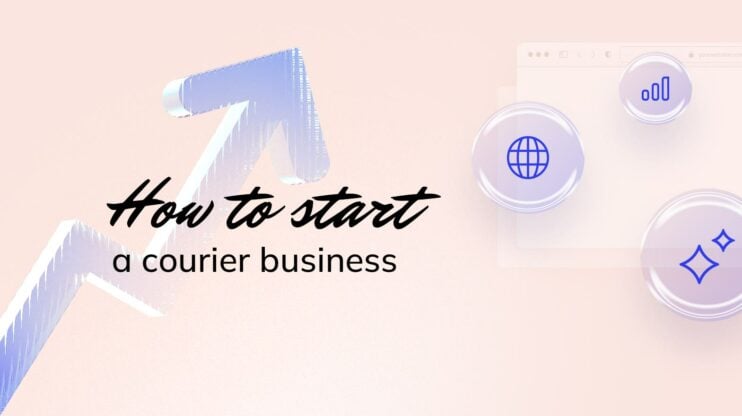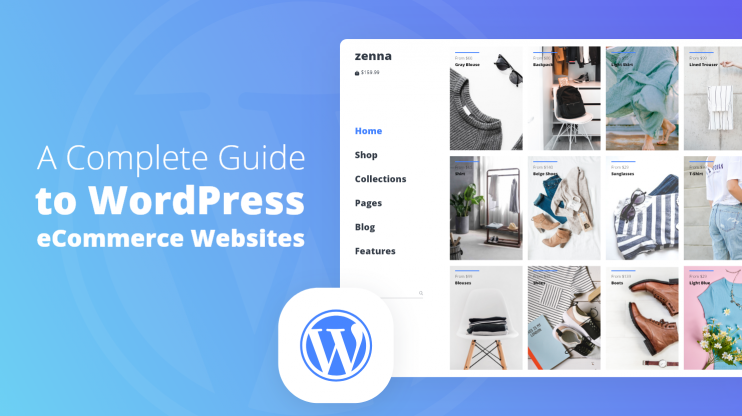There’s a moment every aspiring digital marketer faces—where do I start? Too many tools, too many services, too many strategies. It’s easy to feel stuck before you’ve even begun. And it’s not just the overwhelm. For many beginners, there’s that deeper fear of messing up someone’s business. Asking this question is completely normal.
With this guide, we tried to simplify the process. Not the six-figures-in-30-days fantasy, but a realistic, step-by-step approach for building something that lasts. We’ll tackle common fears like imposter syndrome, finding clients, and pricing your services, giving you the tools to move forward with confidence.
The first 30 days: Your essential starter steps
Not to judge hundreds of things at the same time, and not get anywhere, you need to focus on a few key steps, especially for the first month. This will help you to get enough done to build momentum without burning out. Here’s your essential starter checklist of how to start a digital marketing business to set up a strong foundation.
1. Choose your niche (and don’t overthink it)
Your biggest mistake can come with your first step: trying to offer everything to everyone. Rule number one of marketing, which you should already know – don’t target everyone. Choose an audience to focus on. These may be clients or industries you already know. Or you can make your choice based on what you are confident in (SEO, social media, PPC, or other) and choose a target that needs your services the most.
The more specific you go, the better. It can be SEO for local gyms, or content marketing for wellness brands. You can pivot later, but starting focused helps you stand out and build expertise.
2. Set up basic branding (keep it simple)
Your branding needs to look professional and consistent from day one, without you overspending on it. There are dozens of online tools to help you choose a business name or build a logo in seconds.
For the name, choose something simple and clear. You can brainstorm ideas with the 10Web Business Name Generator. Once you have that and have some basic idea about how you see your brand, you can use the 10Web Logo Maker to get not only a logo, but a complete branding kit to use for your own marketing and to keep everything consistent across your future website and social profiles:
3. Build a simple website (yes, you need one)
Your website is your home base. It’s where you show your marketing portfolio, case studies, how to contact you and more. At the same time, it builds trust and shows that your business is legitimate.
What are your choices when building a website?
- Hire a developer or agency: With this option you will most likely pay a lot, wait a lot, and end up with a website you don’t know how to manage.
- Build it yourself in minutes using AI: A no code affordable option. Use an AI Builder to build a professional website in minutes with non tech savvy tools for management.
If you’re using the 10Web Logo Maker, your branding kit already includes a website that you can set up in just a few steps. If not, you can use 10Web’s AI Digital Marketing Agency Website Builder, designed specifically for digital marketers, to create one in just 3 steps:
- Describe your business: Write a few lines about yourself, your services, and who they’re for.
- Let AI build it: Instantly get a complete site with layouts, content, and service sections.
- Customize & launch: Adjust colors, add your brand elements, and hit publish.
That’s it—you have a fully functional website. Editing and managing it is just as easy. You get a user-friendly dashboard to handle your portfolio, clients, and more. If you need to make changes, just type your ideas into the chat with the AI Co-Pilot, and the AI takes care of the edits for you.
As a bonus, you get hosting, a free domain for the first year, and all the essentials to get started. You can also explore inspiring marketing website examples to get ideas for your own.
4. Create a starter portfolio (Offer work to build it)
Clients need proof you can deliver, but that doesn’t mean years of experience. To show your experience, you can have your portfolio embedded in your website. It can include only 2-3 solid case studies. If you don’t have one, simply build those cases by offering free or discounted services to local businesses, nonprofits that you like, or friends in need of marketing help. Even small wins – like increasing social engagement or improving SEO rankings – show value.
Create your dream website with 10Web AI Website Builder 
Build your website in 1 minute
and take your business online!
Next step: Pricing and packaging
Pricing is often one of the places new digital marketers get stuck. There’s no single right way to price your services. What matters is choosing a model that works for you right now – and knowing you can adjust as you grow.
Let’s explore the most common pricing models for digital marketing businesses:
| Model | How it works | Best for | Consider if |
| Hourly rate | Charge by the hour for the time you spend on tasks. | One-off projects, clients who need flexible support. | You’re unsure how long tasks will take or the scope may shift. |
| Project-based | Set a flat fee for completing a specific project. | Defined deliverables like audits, ad campaigns, or websites. | You can clearly outline the work and timeline upfront. |
| Monthly retainer | Charge a recurring monthly fee for ongoing services. | Ongoing work like SEO, content creation, or social media. | You want predictable income and longer-term client relationships. |
These aren’t rules, just starting points. You can start with one and change to another once you build your confidence or change a market. At any stage, however, it’s important to communicate your packages clearly and openly. An example of a starter package of local SEO can be structuring your retainer like this:
A $500/month package for small businesses that includes keyword research, on-page SEO for five pages, and Google Business Profile optimization.
Pricing checklist
- Know your minimum acceptable rate (what covers your time, tools, and overhead).
- Check competitor pricing for a general range in your market.
- Price based on value delivered, not just hours worked.
- Start simple—you can refine and raise your rates as you gain experience.
How to land (and manage) your first clients
Landing your first client can feel like the hardest part of starting a digital marketing business. Add in imposter syndrome – that nagging voice saying, “What if I’m not ready?” – and it’s easy to hesitate.
But you don’t really have to pretend to know everything. You just need to be honest about where you are and focused on delivering value. Let’s walk through a simple first-client playbook to help you get started the right way.
1. Leverage your existing network
As mentioned before, the easiest place to find your first client is the people you already know. Reach out to friends or family with small businesses, local community organizations, former employers or colleagues. You’re not begging for favors, but offering to help with their marketing in a way that benefits both of you. They get valuable services. You build your portfolio.
2. Offer discounted or free work (with clear boundaries)
Offering free or discounted services can help you get your foot in the door, but set expectations upfront. For example, offer one-time projects (like a website audit or a month of social media posts). Make it clear this is a limited offer in exchange for a testimonial or case study. This helps you build trust without devaluing your services.
3. Use honest pitching scripts
When you approach potential clients, transparency builds credibility. Acknowledge where you are, and highlight your commitment to quality and growth. The core of your message should be an honest win-win offer. Here’s a simple script you can adapt:
4. Communicate with your clients professionally
Once you land that first client, set the tone early:
- Define scope clearly: List exactly what you’re offering (e.g., 5 social posts per week, 1 SEO audit).
- Set timelines: Agree on deadlines to avoid scope creep.
- Communicate regularly: Weekly check-ins or progress updates build trust.
Your first clients aren’t looking for perfection, but rather someone who cares about their business and follows through. So, even with limited experience, great communication and clear expectations set you apart.
Tools you need (and what can wait)
The golden rule with choosing tools you use is to focus on what helps you deliver results, not what just looks impressive. Start with must-haves for now, as they cover the essentials. For the nice-to-have tools, add them when:
- You’re spending too much time on manual tasks.
- You’ve landed steady clients and want to deliver more value.
- You’re ready to scale and manage multiple projects efficiently.
Must-have tools
These are the tools that help you look professional, get paid, and stay organized from day one:
| Category | Tool options | Purpose |
| Website builder | 10Web AI Website Builder | To build your site quickly and easily. |
| Invoicing | Wave, PayPal, FreshBooks | To send invoices, get paid on time. |
| Communication | Gmail, Zoom, Google Meet | To stay connected with clients. |
| File sharing | Google Drive, Dropbox | To share reports, assets, and documents. |
Nice-to-have tools
Once you land clients and have steady work, these tools help streamline and scale your services:
| Category | Tool options | Purpose |
| SEO tools | Ahrefs, SEMrush, Ubersuggest | Keyword research, competitor analysis. |
| Social media scheduler | Buffer, Later, Hootsuite | Plan and automate social media posts. |
| Email marketing | Mailchimp, ConvertKit | Manage newsletters, automate email campaigns. |
| Project management | Trello, Asana, ClickUp | Organize tasks, client projects, and deadlines. |
| Analytics | Google Analytics, Google Search Console | Track website traffic and SEO performance. |
| Graphic design | Canva, Adobe Express | Create social posts, graphics, and presentations. |
Strategies for scaling without burnout
Once you’ve landed a few clients and built steady income, the next big question is how do you grow without burning out? Scaling from solo freelancer to small agency brings new challenges, like hiring help, maintaining quality, and managing your time. But done right, it allows you to increase your impact and income without working 24/7.
When to hire contractors
If you’re turning down work because there aren’t enough hours in the day, maybe it’s time to bring in contractors. You can start small by hiring a freelance designer for graphics, an SEO specialist for audits, or a virtual assistant for those never-ending admin tasks. Understand your bottleneck and address it. Contractors can give you flexibility without the long-term commitment.
How to delegate without losing control
Delegating can feel like letting go of the steering wheel, but clear systems keep you in control. Not to feel too stressed about delegating, you can start by outsourcing small, one-off tasks to test the waters. Document your processes (on simple checklists for tasks), so anyone you bring in knows exactly how you work. Set clear expectations around deadlines and quality, and check in regularly (without micromanaging). Trust, but verify.
Common scaling mistakes (and how to avoid them)
The biggest scaling mistake is doing too much too fast. It’s okay to say no or waitlist clients until your systems can handle more. Skipping those systems is another trap—even a basic workflow keeps chaos at bay. And don’t rush into hiring full-time; start with flexible contractors until your income feels steady. And the final piece of advice: stop trying to do everything yourself—focus on what you’re best at and let others handle the rest.
Mini scaling roadmap
Don’t think of scaling as fast growth. Sustainability is the key factor. So, focus on steady steps, build a team that supports your strengths, and scale at a pace that works for you. Here’s a small stage-by-stage roadmap to guide your scaling process:
| Stage | What to focus on | Signs you’re ready |
| Stage 1: Solo | Land clients, refine services, build basic systems. | Steady income from a few clients. |
| Stage 2: Contractors | Delegate specialized tasks (design, SEO, admin). | You’re at capacity or need expertise. |
| Stage 3: Small team | Hire part-time or full-time help (project managers, assistants). | Your client base is growing consistently. |
| Stage 4: Agency growth | Refine systems, expand service offerings, focus on leadership. | You’re managing multiple clients & contractors. |
Start your digital marketing business today
There’s no secret formula for how to start a digital marketing business, just real steps, taken consistently. Choose your focus, build your brand, land those first clients, and scale at your own pace. The key is to stay grounded, avoid the overwhelm, and focus on delivering value where it counts.
When you’re ready to set up your digital home base, 10Web’s AI Website Builder is here to help. In just minutes, you can create a website that showcases your services and gets your business off the ground.
Create your dream website with 10Web AI Website Builder 
Build your website in 1 minute
and take your business online!
FAQ: Real questions, honest answers
How do I start my own digital marketing company? How do I start digital marketing for beginners? How much money do you need to start a digital marketing business? What are the 7 types of digital marketing? Most digital marketing businesses offer a mix of these services depending on their clients’ needs. Can I start a digital marketing business without a website? How do I get my first clients? Do I need a big budget to start a digital marketing business? Can I just run ads and get clients right away? Do I need years of experience before working with clients? Is one strategy enough for every business?













